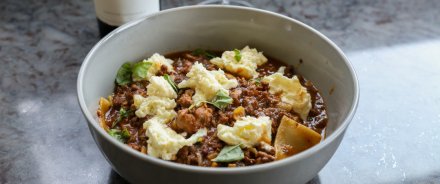Your Go-To Cassoulet Recipe for the Perfect Comfort Dish
As winter bares its worst, there is perhaps no better dish to enjoy than cassoulet. The rich, meaty casserole originated in the Gascony region of France and dates back to the 12th century.
Like Texas chili and Louisiana jambalaya, cassoulet recipes vary widely from city-to-city and house-to-house in France. It is meant to be enjoyed with friends or family with little more than fresh, crusty bread and wine. If you’re new to this comforting classic, this blog provides an easy-to-follow recipe for cassoulet that’s sure to become a household favorite.
Our favorite quote about this dish comes from the woman who brought French cooking into American kitchens, Julia Child:
“Cassoulet, that best of bean feasts, is everyday fare for a peasant but ambrosia for a gastronome, though its ideal consumer is a 300-pound blocking back who has been splitting firewood nonstop for the last twelve hours on a subzero day in Manitoba.”
What is Cassoulet?
Cassoulet is a traditional French dish rooted in the heart of Gascony, a region renowned for its rich, hearty cuisine. At its core, cassoulet is a slow-cooked casserole made with white beans, various meats, and aromatic herbs. The meats can range from pork and sausage to duck confit, and even lamb, depending on the recipe and region. Each bite is a celebration of rustic, countryside flavors that bring comfort to the soul.
The dish is more than just a meal; it’s a symbol of French culinary tradition. Historically, cassoulet was a dish of humble origins, designed to be filling and nourishing during the colder months. Over time, it evolved into a cherished classic, celebrated not only in France but worldwide. Its slow cooking process and complex layers of flavor make it worth every minute of preparation.
The History Behind the Dish
Cassoulet’s story is as layered as the dish itself. Its origins trace back to the 12th century in southern France, during the time of wars and sieges. Legend has it that during a siege in the town of Castelnaudary, locals pooled together what little food they had—beans, meat, and scraps—and cooked a communal stew to keep their spirits and energy high.
Since then, the cassoulet dish has become a staple of French cuisine, with different regions adding their own touches. Castelnaudary, Carcassonne, and Toulouse each claim to have the “authentic” version, with variations in the type of meats used. Despite its evolution, the heart of cassoulet remains the same: a celebration of community, tradition, and good food.

French cooking doesn’t have to be hard. This easy-to-make recipe is a hearty crowd-pleasing plate of amazing. (And the leftovers reheat terrifically!)
The Perfect Wine Pairing for Cassoulet
Pairing wine with cassoulet is an art in itself, and the right bottle can elevate the dish to new heights. Traditionally, cassoulet is paired with full-bodied red wines that can stand up to the dish’s rich and savory flavors.
For a local twist, our Anderson Valley Pinot Noir is a stunning choice. Its bright acidity and hints of cherry and earthy spice cut through the richness of the cassoulet while enhancing the smoky flavors of the duck and bacon. The next time you serve this dish, pour a generous glass, and let the flavors mingle—it’s like a symphony on your palate.




Comments